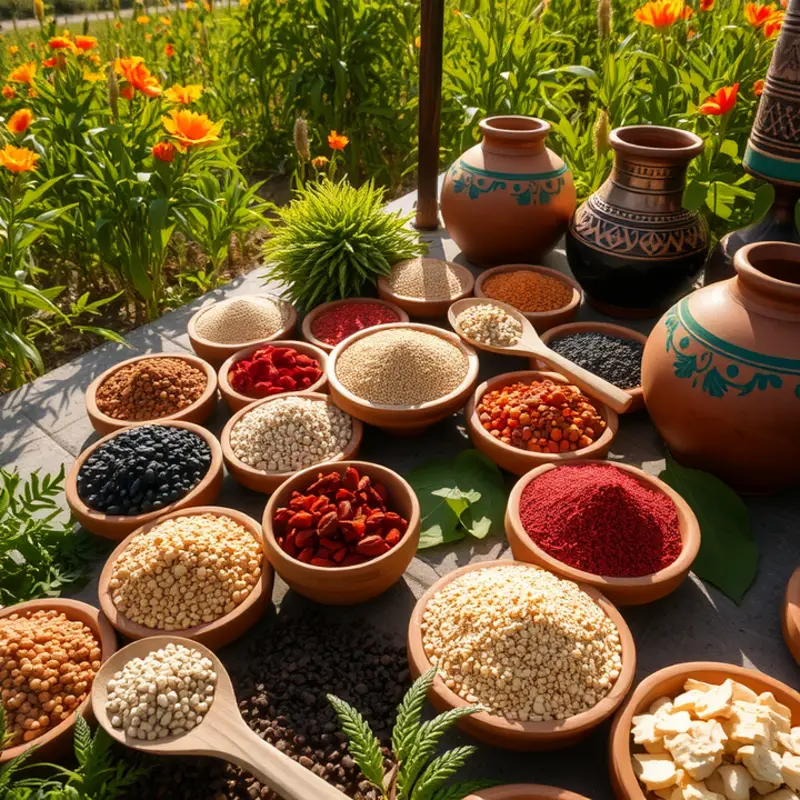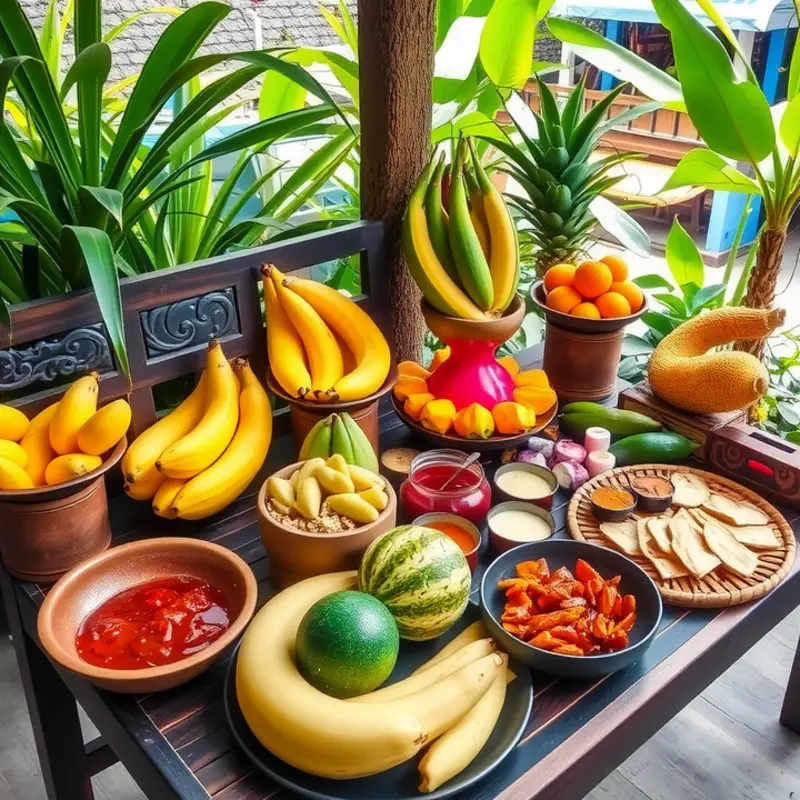Diving into food markets across the globe reveals not just vibrant produce but also the culinary traditions and cultural stories behind each bite. From the bustling streets of Marrakech to the colorful stalls of Chiang Mai, these markets offer a sensory experience that connects global travelers to the rich tapestry of flavors, aromas, and histories. For food enthusiasts and culturally curious readers, this journey through the world’s food markets promises a deeper appreciation for the culinary arts and the communities that cherish them.
Marrakech: A Mosaic of Spices and Flavors

Wandering through the labyrinthine streets of Marrakech’s souks is like stepping into a living kaleidoscope of colors and scents. The bustling market is alive with the spice-scented breath of history and tradition. The vivid palettes of fruits and vegetables spill onto the pathways, enticing passersby to partake in their vibrancy. Each vendor offers a piece of Morocco’s rich tapestry, where culinary practices are passively transferred from one generation to the next.
In the heart of these markets, spices are kings. Saffron, cumin, ginger, and turmeric are not just ingredients but storytellers of a civilization that has thrived on trading routes for centuries. Each spice has its tale rooted in distant lands, yet all meet harmoniously within Moroccan dishes, echoing tales of trade influences. The alluring scent of ras el hanout—a blend of top spices—captures the essence of Moroccan seasoning, making it a staple in every kitchen.
The community life thrives around these markets. For locals, the souk is more than a place of commerce; it’s a confluence of social interaction, tradition, and sustenance. Vendors proudly uphold traditions, often teaching curious visitors about the origin and significance of each ingredient. Relationships are built here, with recipes and cultural nuances exchanged in hushed yet enthusiastic conversations around stalls.
Traditionally, the heart of Moroccan cooking lies in the use of fresh, seasonal produce, reflecting the rhythms of nature. Mint, a staple in Moroccan tea, infuses fresh notes, balancing the spice-heavy dishes. Olive oils are crafted from locally grown olives, celebrating the land’s bounty through every golden drop. In Morocco, every meal becomes an opportunity to appreciate the land and its generous rhythms.
Culinary diversity in Marrakech extends beyond traditional tagine and couscous. Stalls teem with influences reflecting the city’s vibrant history: almonds from the east, apricots from southern oases. Artisans whip up flavors transcending borders. Here, food is a canvas painted by interactions with centuries of explorers, traders, and settlers.
While exploring these vibrant souks, one might encounter local wisdom about mindful eating, a concept not foreign to Moroccan culture where meals are leisurely and shared. This sense of community and mindfulness can further inspire modern approaches to eating well, such as those discussed in this article.
Marrakech’s food markets are a testament to the enduring spirit of community and culinary heritage. They offer a sensory journey that transcends the plate, crafting a narrative that binds people to the soul of Moroccan culture. The bustling activity within these ancient stalls provides a living showcase of how cultural exchanges have shaped and enriched the mosaic of spices and flavors that define Moroccan cuisine.
Chiang Mai: Where Tradition Meets Culinary Adventure

Walking through Chiang Mai’s night markets is like stepping into a realm where flavors dance vividly amid the colorful chaos of food stalls. The city, known as the cultural capital of northern Thailand, is celebrated for its street food offerings, where traditional recipes and contemporary culinary innovations coexist. The aroma of grilled meats wafts through the air, enticing visitors with every sizzling turn over an open flame. Vendors are often family-run enterprises, honing their skills through generations, each with their own secret spice blends that elevate these simple street foods into unforgettable experiences.
The tangy bite of som tam, or papaya salad, is a testament to the balance of flavors that Thai cuisine artfully achieves. Unripe papayas are shredded and mixed with fish sauce, lime juice, chilies, and garlic, alongside ingredients like tomatoes and peanuts. Vendors expertly craft the dish to suit individual taste preferences, adjusting the heat level to accommodate even the most delicate palates. This interplay between customer and vendor reflects the flexibility and personalization inherent in Thai food culture.
Meanwhile, mango sticky rice offers a sweet counterpoint to the savory delights swirling through the market. This dish, a symphony of creamy coconut-infused glutinous rice paired with slices of ripe, juicy mango, is a beloved Thai dessert. The juxtaposition of supple rice and succulent fruit, crowned with a drizzle of salted coconut cream, delightfully captures the natural bounty of the region’s produce.
However, beyond traditional offerings, Chiang Mai’s food artisans are unafraid to experiment, bringing modern twists to their classic dishes. Some vendors introduce international ingredients, fusing global flavors with local cuisine, yet retaining the essence of what makes Thai food genuinely special. Whether incorporating sous-vide techniques into barbecue or using exotic spices from across Asia, innovation breathes new life into beloved staples.
The stories of these vendors are as rich and varied as their culinary creations. Many uphold traditional methods not merely for the sake of preservation but out of respect for their heritage and as a means to connect with their community. Vendors often share tales of their grandmothers grinding spices by hand or cultivating herbs in home gardens—a nod to a more sustainable and eco-conscious approach to food, akin to principles explored in eco-smart kitchen storage.
Chiang Mai’s night markets, with their dynamic blend of past and present, offer more than just nourishment—they provide a sensory exploration of culinary culture grounded in tradition while welcoming the future. Here, food is not just sustenance; it is a celebration of identity, ingenuity, and the enduring power of flavors to tell stories across generations.
Final words
Exploring food markets around the world unveils not just a variety of aromas and flavors but also the traditions and stories woven into each dish. The vibrant stalls of Marrakech and the bustling night markets of Chiang Mai are just two examples of how food serves as a bridge connecting cultures and communities. By visiting these markets, food enthusiasts can partake in a tapestry of culinary history, and understand the deep-rooted traditions that fuel our global appetite. Each market visit is not merely about tasting; it’s an immersion in culture and community, inviting us all to savor the world.








